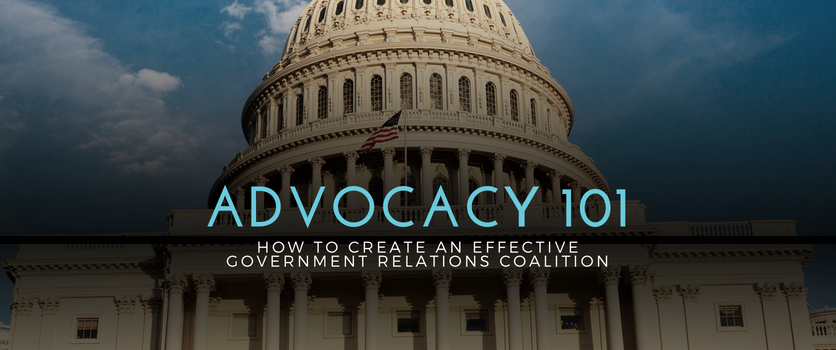Part two of a three-part series
In the first blog in this three-blog series, we discussed the importance of advocacy with both federal and state governments as a key benefit your organization provides members. We looked at ways to quickly build an outreach program that taps the resources you have in place. Now let’s turn our attention to strategy number two.
When you’re trying to get someone’s attention, it’s more effective to yell than whisper. That’s the strategy behind the second way associations can make an impact on government relations: build a coalition of like-minded organizations.
After getting your own advocacy efforts underway with an outreach program, take a look around to see what other groups share your position(s) on the current issues affecting your industry. Then reach out to see if they are ready to combine forces.
It’s a great way to amplify your impact with key legislators, especially if your organization doesn’t have a lot of resources to put behind advocacy efforts.
Turn up the volume
Coalitions may seem like a no-brainer, but it’s an often-overlooked strategy, mostly because the logistics can seem overwhelming. In reality, with a little bit of upfront coordination, it’s a fairly easy way to intensify the impact of the work you’re already doing for your own outreach efforts. Many voices are always louder than one.
Think about it from the perspective of the legislators you’re trying to influence. While they may be receptive to your phone calls, letters, and emails, the impact will be much greater when they hear from six or seven other groups echoing the same messages about upcoming legislation or policy decisions.
The math works the other way, too. When you’re trying to maintain relationships with a few hundred legislators, your odds of success are much better when you can spread the work out to divide and conquer.
Here today, maybe gone tomorrow
Coalitions don’t necessarily require a long-term commitment. For example, if there is a single issue on the docket that could impact your industry, quickly organize a band of organizations that can work together in a guerilla fashion. Meetings will likely be ad hoc and frequent to manage evolving circumstances.
The main thing is to make sure your impromptu band is all singing from the same song sheet. Get consensus on what the group wants to say, then create a quick advocacy fact sheet about the issue. Condense the key messages on a one-page document that can easily be shared with legislators. Make sure it’s completely accurate. List the action your coalition is asking legislators to take: “Vote No on House Bill XXX” or “Support Amendment #2 to SB XXX.” List the groups that form the coalition.
When the issue is settled, the coalition can disband (hopefully after a celebratory get-together!).
Long-term relationships
Other coalitions may last many years and cover a variety of issues. More permanent coalitions can require a bit more work to keep everyone on track.
Ask each participating group to assign a representative who attends monthly conference calls and is responsible for assigned action items.
You’ll want to set some ground rules, who moderates the meetings, and who is ultimately responsible for following up on all those action items. Set an agreement to elect new coalition managers on an annual basis so your ideas stay fresh and no one gets burned out.
There will likely be times when your organization doesn’t agree with the stated opinion of the coalition. That’s OK. Simply ask that your group’s name be removed from any of the coalition’s outreach efforts and pursue your own lobbying efforts.
Speaking of lobbying, members of the coalition must be upfront about outside lobbyists they have engaged. Transparency about government relations efforts from all participants goes a long way in building a foundation of trust among peers.
Be smart
It’s important to help legislators and administrators understand the impact their decisions may have on your industry. But, be careful not to waste their time.
- Know your facts – Make sure your coalition is up-to-date on what’s happening. Be aware of the bill number for the issue you are addressing and where it stands in the process.
- Do your research – Include numbers, figures, and statistics. Legislators like to have numbers to support their positions. What will it cost the industry? How many other states have these laws? Will it make it easier/more difficult to compete with neighboring states?
- Be specific – Provide legislators succinct facts on how the bill or issue affects the members of the coalition. Will it raise expenses by $XXX per year? Will members need to lay off employees? Will it enable members to expand the capacity of their operations?
As always, it’s important to evaluate your coalition outreach program every quarter to measure its effectiveness and to plan ahead for the coming months.
Members count on your association to advocate for their best interests. Need help to kick-start your government outreach? Frontline has years of experience planning effective advocacy outreach. Give us a call and we’ll help you hit the ground running.


